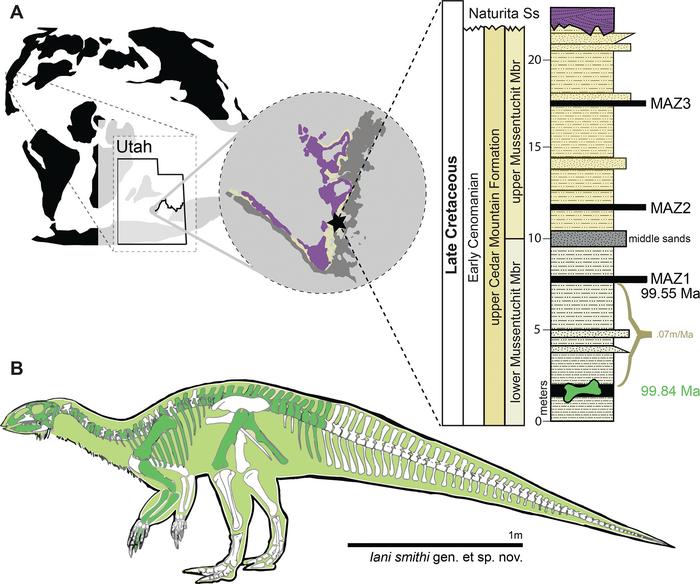First named Pterosaur from Japan sheds light on ancient flying reptiles – Newly identified Nipponopterus mifunensis highlights international collaboration and Japan’s rich prehistoric heritage
A team of researchers from Japan, China, and Brazil has announced the discovery of a new species of pterosaur from the Late Cretaceous of Japan, marking the first time a pterosaur has been named based on body fossils found in the country.
The species, Nipponopterus mifunensis, was identified from a partial neck vertebra originally discovered in the 1990s in the Mifune Group geological formation in Kumamoto Prefecture, located on Japan’s southern island of Kyushu. After a detailed reassessment using advanced CT scanning provided by Kumamoto University and subsequent phylogenetic analysis, the research team concluded that the specimen represents a new genus and species within the Azhdarchidae family—a group known for containing some of the largest flying animals that ever lived. The fossil is now on public display at the Mifune Dinosaur Museum in Kumamoto Prefecture, offering visitors a rare glimpse into Japan’s ancient skies.
“This is a major step forward for Japanese paleontology,” said Dr. Naoki Ikegami from the Mifune Dinosaur Museum, “Until now, no pterosaur had been formally named from skeletal remains found in Japan. This discovery provides crucial new insight into the diversity and evolution of pterosaurs in East Asia.”
Interestingly, Nipponopterus may have had a wingspan approaching 3 to 3.5 meters and lived during the Turonian–Coniacian stages of the Late Cretaceous, making it one of the earliest known members of its lineage.
The newly identified sixth cervical vertebra (neck bone) of Nipponopterus mifunensis reveals a set of striking features not seen in any previously known species. Most notably, it has a prominent, elevated dorsal keel that runs along the back of the bone—extending not just over the epipophysis but across the entire postexapophyseal peduncle. Additional distinctive traits include a long groove running along the underside (ventral sulcus), a subtriangular-shaped condyle, and unusually positioned postexapophyses that project outward to the sides. These characteristics set Nipponopterus mifunensis apart from all other known azhdarchid pterosaurs. Phylogenetic analysis places it within the Quetzalcoatlinae subfamily, identifying it as a close relative of both the mysterious “Burkhant azhdarchid” from Mongolia and the giant Quetzalcoatlus of North America.
Published in the peer-reviewed journal Cretaceous Research, the study was the result of an international collaboration involving researchers from Shihezi University in China, the Zoology Museum at the University of São Paulo in Brazil, and a team in Japan from the Mifune Dinosaur Museum, Kumamoto University, and Hokkaido University. Researchers worked closely together, combining expertise in fossil analysis, imaging technology, analytical modeling and evolutionary studies.
“It’s a beautiful example of how science transcends borders,”
noted Professor Toshifumi Mukunoki from the Faculty of Advanced Science and Technology, Kumamoto University.

Bibliographic information:
Xuanyu Zhou, Naoki Ikegami, Rodrigo V. Pêgas, Toru Yoshinaga, Takahiro Sato, Toshifumi Mukunoki, Jun Otani, Yoshitsugu Kobayashi, Reassessment of an azhdarchid pterosaur specimen from the Mifune Group, Upper Cretaceous of Japan, Cretaceous Research Volume 167, 2025, 106046, ISSN 0195-6671, DOI: https://doi.org/10.1016/j.cretres.2024.106046
Press release from Kumamoto University.









